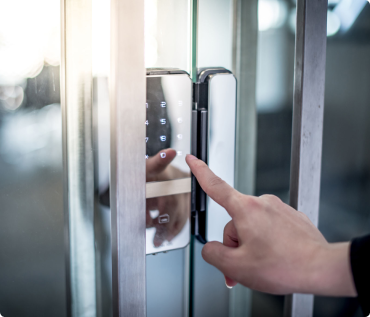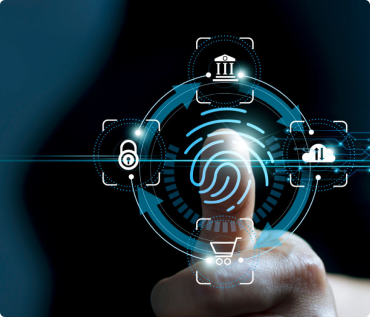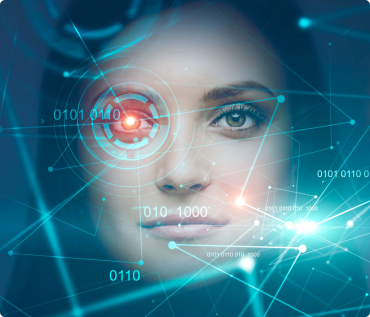Data security is the topmost priority of every company. The data can be secured by taking various measures like installing antivirus software or using a firewall to protect against malware or phishing. At the same time, physical attacks should not be overlooked because not all threats to data are computer-based. Thus, it is important to take proper steps to save your business from physical attacks. The following are a few ways to protect data:
- Data violations can be avoided by using verification, encryption, and passwords. A strong password and constantly changing passwords can prove useful.
- A robust security policy should be implemented. It should include training and education of employees to protect confidential information.
- Another way is by using a data management tool to access information and track things like software updates.
- A trained and certified data security staff can prove to be beneficial. The concerned person should be able to manage any violation and should have an understanding of the organization's data protection policy.
- The employees should be trained about all kinds of physical attacks, like social engineering attacks, and they also should be aware of email phishing.
- You should keep your firewalls on network access and update anti-spyware and anti-virus software.
- Access to confidential information should be limited to only a few employees that are working on it.
- The employees should not open any attachments from an unknown email.
- The data should always be backed up and maintained in case any violation takes place.
Protecting Data from Physical Attacks
Let’s discuss how your business is vulnerable to physical attacks and what steps can be taken to protect your data from such threats.
1. Social Engineering
Social engineering attacks are a way in which a person manipulates you to reveal confidential information. It can take place in various forms, like using the employees of your company, or using information gained to masquerade as someone else, or manipulating emotions to obtain access to secured areas or networks. Most of the time, businesses focus more on protecting computer-based data, but in reality, social engineering attacks can be as damaging as any other attacks.
You might remember receiving a call from a representative claiming to be an employee of a certain company asking for some confidential information such as your account name, password, PIN number, and so on. Then you might be a victim of an attempted social engineering attack.
To defend yourself against such attacks, you must first be cautious and alert to any such phone calls. You should not let out any confidential information over an unverified phone call. Even a harmless question like where you grew up could be used against you to get into one of your accounts.
You should be fully aware of the profile of the caller from the company. If there are any changes, your company should introduce you to the employee. In case you receive any such call, claiming to be from the IT department of your bank or credit card company, hang up the call and immediately call the concerned company to verify.
The way in which companies can secure themselves from all social engineering threats is by doing a systematic physical security risk assessment and ways in which the security can be breached. It is also important to create awareness about social engineering attacks amongst the employees so they can identify any such threats.
2. USB Drive Attack
The USB drive attack is a way in which a USB drive is planted in the targeted environment. For example, on your way to the office, you find a USB drive in the vicinity and you pick it up to find the owner. Then you take the USB and plug it into your computer to find out about the owner of the drive.
Your intention of helping someone might turn out to be risky for you and your company. The USB could have been deliberately dropped around your office so as to get access to confidential information. The USB could introduce some attack in the background or introduce a backdoor into the network even though the USB drive could not be opened.
Most people are aware of not accessing an unknown USB drive or downloading any files from it. However, it is essential to impart knowledge to the employees on how to treat unknown USB drives cautiously.
3. Physical Security
Physical security of the premises is as important as any other security. It is vital to keep track of the entry and exit of people in and out of the office through some kind of security system. There are a lot of factors that are supposed to be considered, like doors to be locked or doors to remain open for easy accessibility, how the server room is to be secured, tracking people going in and out of the office, and so on. Thus, to maintain safety, the company can install a fingerprint scanner, face scanner, or key cards for employees to enter and exit easily.
4. Tailgating
Tailgating is when an attacker follows an authorised official into a permitted zone. Even though workplaces might have a certain level of security, it is still can be surpassed by a strong-minded attacker. One of the reasons they can breach the security is because a lot of people might go through the same door and only the person in front might swipe the card.
The people behind might just pass by, thus, making it easier for any person to access the place without any issues.
Tailgating can be stopped by taking correct physical safety measures like installing an anti-tailgating system that makes it difficult to pass by without an access card. Another way is by offering physical security training to the employees. This helps to create awareness amongst the employees and gives them a strict security policy. This might include not holding the door for unknown people when they try to enter the place. In case if they see any suspicious activity while passing the security, they can immediately report it to the security guard.
5. Theft of documents
The office is more likely to have a lot of documents and papers on desks, personal offices, or printer stations. These documents might contain a few sensitive information if reached to the wrong person might lead to a big threat for the company. There are chances that the documents can be stolen from the place or someone might read the information that they aren’t supposed to know.
To prevent document theft or unintentional disclosure of documents or sensitive information is by establishing a clear desk policy. A clear desk policy requires that every desk is supposed to be cleared and the documents should be kept in a locker or a drawer at the end of the day.
This makes it easier to save sensitive documents from being leaked or reaching into the wrong hands. Lastly, all the sensitive documents should be shredded after the work is done and the document is no more required for work. It is vital to install an access control system to prevent any uninvited person from accessing the facility.
6. Unaccounted visitors
The swipe-card access control system or ID card access doors can be beneficial for the security of the company. The visitors should be provided with a visitor card to ensure that person is authorised to be in the building. It is also necessary to maintain a logbook to note the entry and exit time of the visitor for verification. You need to be cautious that every person complies with the verification system so that any unauthorised visitor does not get into the premises.
7. Stolen Identification
An access control system is a great way to ensure the security of the company, but it will work only if every person uses their own registered card. There is no point if another person can use the identification card of someone else to go in and out of the building. Therefore, it is important to tell the employees about the importance of identification cards.
The employees need to know that identification cards or access cards are important to prohibit the entry of unauthorised persons. Employee card exchanges can be avoided in this manner, and access can be monitored more closely. Therefore, it is vital to demonstrate the significance of securely using their identification cards.
Conclusion
Data protection is not easy and requires constant effort, resources, and time to ensure that the company is safe from any physical attack. In the end, it is necessary to protect your company by using a suitable physical security method like access control systems, surveillance systems, and security teams. Subsequently, creating awareness amongst the employees about the importance of physical security and motivating them to be active in case of any threat.





